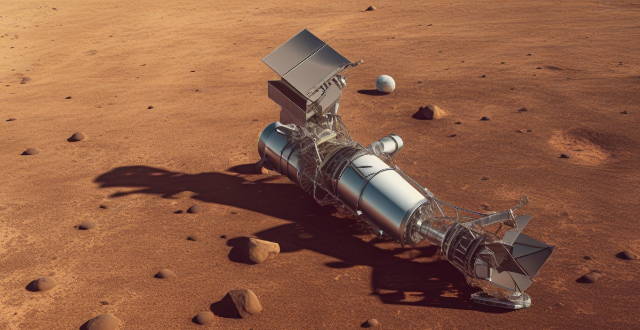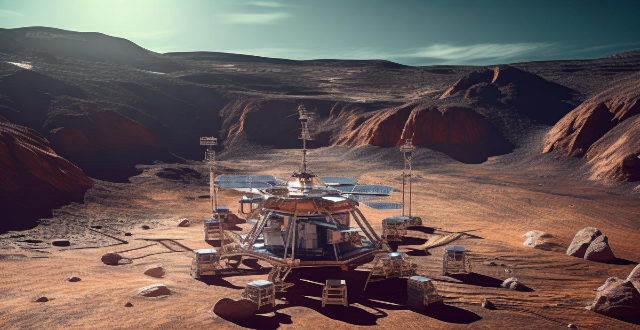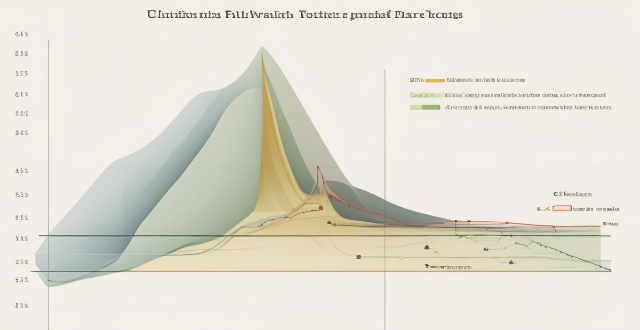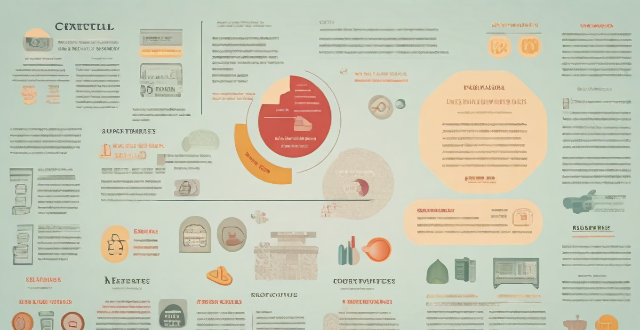Rocket Measure

What safety measures are taken during a rocket launch and how have they improved over time ?
Rocket launches are complex and dangerous events that require numerous safety measures to ensure the success of the mission and the well-being of all personnel involved. Over time, these safety measures have evolved and improved significantly due to advancements in technology, increased understanding of potential risks, and lessons learned from past incidents. Before a rocket is launched, several safety measures are taken to minimize risks, such as design reviews, quality assurance testing, personnel training, range safety, and weather checks. Once the rocket is launched, additional safety measures come into play, including telemetry tracking, flight termination systems, and emergency evacuation plans. After the rocket has successfully reached space, there are still safety considerations, such as debris tracking and environmental cleanup. Safety measures during rocket launches have improved significantly over time due to advancements in technology, increased understanding of risks, lessons learned from past incidents, and stricter regulations and standards developed by government agencies and industry organizations.

How do international collaborations influence the development of rocket technology ?
International collaborations play a crucial role in the development of rocket technology by fostering knowledge exchange, sharing resources, and pooling expertise to overcome complex challenges. Here's a detailed look at how these partnerships influence advancements in this sector: 1. **Knowledge Exchange**: - **Cross-pollination of Ideas**: Collaborative efforts allow for the cross-pollination of ideas from different countries, each bringing unique perspectives and solutions to the table. This diversity of thought can lead to innovative breakthroughs that might not have been possible within a single nation's framework. - **Education and Training**: Through international partnerships, scientists, engineers, and technicians have access to educational programs and training opportunities that broaden their skill sets and keep them abreast of the latest advancements in rocket technology. 2. **Resource Sharing**: - **Financial Resources**: Developing advanced rocketry is costly. Partnerships can spread the financial burden across multiple nations, making ambitious projects more feasible and sustainable. - **Technical Resources**: Different countries may specialize in specific areas of rocket technology. By collaborating, they can share tools, facilities, and materials, accelerating research and development processes. 3. **Expertise Pooling**: - **Specialization**: Each country often has its areas of specialization. International collaborations enable the concentration of specialized knowledge and skills on particular aspects of rocket technology, leading to more efficient and effective outcomes. - **Problem-Solving**: When faced with complex engineering problems, a collaborative approach means that diverse teams can work together to find solutions more quickly and effectively than isolated efforts might achieve. 4. **Risk and Cost Sharing**: - **Reducing Individual Risk**: By collaborating, nations can share the risks associated with rocket development. This risk distribution makes it easier for countries to embark on ambitious projects without bearing the full consequences of potential failures. - **Cost Efficiency**: Sharing the costs of research, development, and manufacturing among partners can make rocket technology more affordable, allowing for greater investment in innovation rather than duplicative efforts. 5. **Global Standards and Regulations**: - **Unified Approach**: Collaboration helps in establishing global standards for safety, quality, and performance. These standards ensure consistency in the industry and make it easier for different countries to work together seamlessly. - **Compliance and Regulation**: International cooperation also facilitates the creation of regulations that govern the responsible use of space, preventing conflicts and ensuring the sustainable exploration and use of space for all nations. In conclusion, international collaborations are instrumental in propelling the development of rocket technology forward. They create an environment where resources, knowledge, and expertise are shared, risks and costs are distributed, and global standards are established, ultimately benefiting all participants in the quest for space exploration and beyond.

How does rocket propulsion work and what fuels are commonly used ?
Rocket propulsion is the method through which a rocket generates thrust, converting potential energy from fuel into kinetic energy expelled at high velocity. Key components include fuel and oxidizer, the combustion chamber, and the nozzle. The process involves ignition, combustion, expansion, acceleration of gases, and finally, thrust generation. Rockets use various types of chemical fuels, including liquid and solid variants, as well as alternative concepts like hybrid, nuclear, and electric propulsion. Each type of fuel has its advantages and disadvantages, making them suitable for different applications.

How has rocket technology evolved since the early days of space exploration ?
The evolution of rocket technology has been a journey from liquid-fueled rockets to reusable launch vehicles, marked by significant milestones. The development of ICBMs during the Cold War laid the groundwork for space exploration technologies. Multistage rockets increased payload capacity and efficiency. Reusable rockets reduced costs and paved the way for sustainable space travel. Future prospects include advanced propulsion systems like ion thrusters and nuclear propulsion, promising faster transit times and more efficient energy use.

What companies are leading the way in commercial spaceflight ?
Commercial spaceflight is a growing industry with several key players, including SpaceX, Blue Origin, Virgin Galactic, Boeing, and Rocket Lab. Each company has its own mission and achievements, ranging from successful launches and landings of rockets to developing new spacecraft for future missions. These companies are leading the way in advancing humanity's exploration and utilization of space.

What is the role of artificial intelligence in modern rocket technology ?
The article discusses the pivotal role of Artificial Intelligence (AI) in revolutionizing various aspects of modern rocket technology. It explores how AI is transforming design and manufacturing processes, including computational fluid dynamics simulations, machine learning-driven material science, and automated manufacturing. The text also delves into AI's contributions to launch and orbital insertion, such as predictive maintenance, trajectory optimization, and real-time decision making. Furthermore, it highlights AI applications in on-orbit operations like autonomous navigation, swarm intelligence, and fault detection and recovery. The article concludes by discussing future implications of AI in deep space exploration, reusable rocketry, and collaborative robotics, emphasizing its potential to make space missions safer, more efficient, and cost-effective.

Which economic indicators are used to measure the health of the labor market ?
The health of the labor market is crucial for any economy, and several economic indicators are used to measure it. These include the unemployment rate, employment growth, labor force participation rate, wage growth, and job openings and vacancies. The unemployment rate measures the percentage of the labor force that is unemployed but actively seeking work, while employment growth refers to the number of new jobs created over a specific period. The labor force participation rate measures the percentage of working-age individuals who are either employed or actively seeking employment, and wage growth reflects the earning power of workers. Job openings and vacancies provide insight into the demand for labor within the economy. By monitoring these indicators regularly, stakeholders can identify trends and potential issues early on, allowing them to take proactive steps to address any challenges and promote a healthy labor market.

How can we measure climate vulnerability ?
Measuring climate vulnerability involves identifying relevant indicators, collecting data and information, analyzing vulnerability levels, prioritizing adaptation measures, and monitoring progress. This process helps identify areas most at risk from climate change impacts and develop strategies to reduce their vulnerability.

Is there a way to measure network latency ?
Measuring network latency is crucial for understanding a network's performance. The ping test, traceroute, and online tools are methods to measure latency. Ping tests estimate the round-trip time, while traceroute identifies bottlenecks in the network path. Online tools provide visual representations of network performance.

How do I measure progress in my sports training plan ?
Measuring progress is crucial for athletes to track development and adjust their training plans. Set SMART goals, track performance, evaluate technique, monitor body composition, assess fitness level, and reflect on mental state to measure progress effectively.

How do professional bartenders measure ingredients for consistency ?
Professional bartenders use a variety of tools and techniques to measure ingredients consistently. Accuracy is crucial for maintaining the same flavor profile and balancing different tastes in cocktails. Efficiency is also important, as it speeds up drink-making and allows bartenders to focus on customer interaction. Jiggers are commonly used tools for measuring both large and small quantities of liquids. Measuring spoons are used for smaller amounts like bitters or syrup. Digital scales are used for precise measurements by weight, especially for ingredients like fruit juices or syrups. Pour spouts and containers help control the flow of liquids to reduce spillage and waste. Standardization processes such as recipe cards, batching, and taste testing are also essential. Recipe cards include detailed measurements for each ingredient, helping new bartenders learn quickly and maintain consistency. Batching involves pre-mixing a large volume of a single cocktail ingredient or an entire recipe, saving time during busy shifts and ensuring uniformity. Taste tests are crucial even with precise measurements, as bartenders adjust recipes based on customer feedback and ingredient freshness. In conclusion, professional bartenders rely on a combination of tools, techniques, and standardized processes to measure ingredients consistently. This ensures that they can replicate the perfect cocktail every time, providing a high-quality experience for their customers.

How do fitness trackers measure calories burned ?
**How Fitness Trackers Measure Calories Burned: A Comprehensive Overview** Fitness trackers have revolutionized the way we monitor our physical activities and health. One of their most popular features is the ability to estimate the number of calories burned during various exercises. But how do these devices actually calculate this information? In this article, we delve into the science behind fitness trackers and explore the key components that contribute to their calorie-burning estimates. Firstly, heart rate monitoring plays a crucial role. By tracking your heart rate, fitness trackers can gauge the intensity of your workout and, therefore, the approximate number of calories you're burning. Secondly, activity recognition allows the device to identify specific types of movement, such as walking or running, and apply corresponding metabolic equivalent (MET) values to calculate energy expenditure. Thirdly, personal information like age, gender, height, weight, and daily activity level are essential for customizing calorie burn calculations to your unique profile. Finally, sophisticated algorithms combine all these data points to provide an estimate of calories burned. However, it's important to remember that these estimates are not exact measurements but rather approximations based on scientific research and technological advancements. As such, fitness trackers should be viewed as valuable tools to aid in your fitness journey rather than definitive indicators of progress.

How can we measure the value of ecosystem services ?
The article discusses various methods to measure the value of ecosystem services, which are benefits humans derive from ecosystems. These include provisioning, regulating, cultural, and supporting services. Measuring their value is crucial for informed decisions about management and conservation. Methods include direct market valuation, indirect market valuation, revealed preference methods, avoided cost method, replacement cost method, and benefit transfer method. By using these techniques, policymakers and managers can make informed decisions about resource allocation for ecosystem conservation and restoration.

How can we measure the effectiveness of climate resilience strategies ?
Measuring the effectiveness of climate resilience strategies is crucial for ensuring that communities and ecosystems are adequately prepared for the impacts of climate change. Key factors to consider when evaluating the success of these strategies include assessing impact reduction, monitoring adaptive capacity, evaluating systemic resilience, long-term sustainability, scalability and replication, and community engagement and perception. By considering these factors and using a combination of quantitative data analysis and qualitative assessments, we can comprehensively measure the effectiveness of climate resilience strategies. This will help in refining current approaches and informing future strategies to build a more resilient world in the face of ongoing climate change.

What are the different types of sensors used in environmental monitoring ?
Environmental monitoring involves the use of various sensors to collect data on different environmental parameters. These sensors include temperature sensors, humidity sensors, pressure sensors, light sensors, and chemical sensors. Temperature sensors measure the temperature of the environment and are crucial for monitoring weather patterns, climate change, and the impact of human activities on the environment. Humidity sensors measure the moisture content in the air and are essential for monitoring weather patterns, air quality, and the impact of human activities on the environment. Pressure sensors measure the force per unit area exerted by a fluid or gas and are crucial for monitoring weather patterns, air quality, and the impact of human activities on the environment. Light sensors measure the intensity and wavelength of light in the environment and are essential for monitoring solar radiation, atmospheric conditions, and the impact of human activities on the environment. Chemical sensors measure the presence and concentration of specific chemicals in the environment and are crucial for monitoring air and water quality, soil contamination, and the impact of human activities on the environment. Overall, these sensors help us understand the state of our environment and take necessary actions to protect it.

How do investors measure the ESG impact of their portfolios ?
Investors measure the ESG impact of their portfolios by considering environmental, social, and governance factors. They use methods such as ESG ratings, weighted scores, thematic analysis, scenario analysis, and active ownership to evaluate the alignment of their investments with their values and goals.

How can you measure the effectiveness of a personal safety training program ?
Personal safety training programs are crucial for individuals to learn how to protect themselves from potential threats and hazards. However, it is equally important to measure the effectiveness of these programs to ensure that they are achieving their intended goals. Here are some ways to measure the effectiveness of a personal safety training program: 1. Assessment Tests: Before and after the training program, conduct assessment tests to gauge participants' knowledge and skills related to personal safety. These tests can include quizzes, case studies, or role-playing scenarios. Compare the results of the pre-test and post-test to determine if there has been an improvement in participants' understanding and application of safety concepts. 2. Observations: During the training sessions, observe participants' engagement levels, participation, and interactions with each other. Look for signs of active learning, such as asking questions, sharing experiences, and offering suggestions. High levels of engagement and participation indicate that the program is effective in delivering its content. 3. Feedback Surveys: After completing the training program, collect feedback from participants through surveys or evaluation forms. Ask them about their overall satisfaction with the program, what they learned, and how they plan to apply it in their daily lives. Analyze the responses to identify areas where the program was successful and areas that may need improvement. 4. Follow-Up Sessions: Schedule follow-up sessions several weeks or months after the initial training to review key concepts and reinforce learning. This will help participants retain the information and apply it when necessary. During these sessions, assess participants' recall and understanding of the material covered in the original training program. 5. Incident Reports: Track incident reports related to personal safety before and after the training program. A decrease in the number of incidents or severity of incidents could be an indication that the program is effective in reducing risks and promoting safer behaviors among participants. By implementing these methods, you can measure the effectiveness of your personal safety training program and make necessary adjustments to ensure that it continues to meet the needs of your participants.

What is the GDP and why is it considered a crucial economic indicator ?
GDP is a crucial economic indicator that measures the market value of all final goods and services produced by a country in a specific time period. It serves as a measure of economic activity, national wealth, and a benchmark for international comparisons. GDP also impacts financial markets, reflects the standard of living, influences global perceptions, and drives employment opportunities. However, it should be considered in conjunction with other indicators for a more holistic understanding of an economy's health.

How do countries measure their progress towards achieving climate goals ?
Countries measure their progress towards achieving climate goals through various indicators and metrics. These include Nationally Determined Contributions (NDCs), greenhouse gas inventories, renewable energy production, carbon intensity, forest cover and land use changes, climate finance flows, policy implementation, and public awareness and participation. By tracking these factors, countries can assess their performance in reducing emissions, adapting to climate impacts, and supporting global efforts to combat climate change.

How can companies measure the effectiveness of celebrity endorsements on sales ?
Measuring the effectiveness of celebrity endorsements on sales is crucial for companies to determine the return on investment (ROI) of their marketing campaigns. Companies can measure the impact of celebrity endorsements on sales by analyzing sales data, brand awareness and equity metrics, customer acquisition and retention rates, and social media engagement and sentiment analysis. These methods provide insights into changes in sales volume, revenue, market share, consumer perceptions of the brand, customer demographics, purchase behavior, loyalty, and overall impact on consumer attitudes and potential sales. By using these methods, companies can gain valuable insights into the ROI of their celebrity endorsement campaigns and make informed decisions about future marketing strategies.

How to measure the effectiveness of influencer marketing ?
Influencer marketing is a popular strategy for brands to reach target audiences, but measuring its effectiveness can be difficult. Key metrics include engagement rates (likes, comments, shares), follower growth, website traffic, conversion rates, ROI, brand awareness & sentiment, and influencer performance metrics (reach, impressions, CTR). By tracking these metrics and analyzing them regularly, brands can gain insights into the success of their campaigns and make data-driven decisions for future collaborations.

How do women-specific NGOs measure their impact on reducing poverty and inequality ?
This article explores how women-specific NGOs measure their impact on reducing poverty and inequality by focusing on key metrics such as economic empowerment, education and skill development, health and well-being, and gender equality and empowerment. It also highlights successful NGOs like Women's World Banking, Room to Read, and International Planned Parenthood Federation (IPPF) that use data collection tools to track progress towards their goals.

How can businesses measure and report their environmental performance throughout their supply chains ?
Measuring and reporting environmental performance in supply chains involves setting clear objectives, conducting a baseline assessment, developing an action plan, implementing and monitoring progress, and reporting performance transparently. Adopting standardized metrics, engaging stakeholders, and continuously improving are best practices to effectively manage environmental impact throughout the supply chain.

How can I measure the ROI of my social media marketing efforts ?
Measuring the return on investment (ROI) of your social media marketing efforts is crucial for understanding the effectiveness of your campaigns and making data-driven decisions. Here's a step-by-step guide to help you measure the ROI of your social media marketing efforts: 1. Set clear goals for your social media marketing campaigns. These goals should be specific, measurable, achievable, relevant, and time-bound (SMART). Some common goals include increasing brand awareness, generating leads, driving website traffic, and boosting sales. 2. Identify the key performance indicators (KPIs) that will help you measure your progress towards achieving those goals. Some common KPIs for social media marketing include engagement rate, reach, click-through rate, and conversion rate. 3. Use analytics tools to track your KPIs and monitor your campaign's performance. Most social media platforms offer built-in analytics tools, and there are also third-party tools like Google Analytics, Hootsuite, and Sprout Social that provide more detailed insights into your social media marketing efforts. 4. Calculate your ROI by comparing the revenue generated by your social media marketing campaigns to the costs associated with those campaigns. Use the formula: ROI = (Revenue - Cost) / Cost x 100%. For example, if your social media marketing campaign generates $5000 in revenue and costs $2000 to run, your ROI would be 150%. This means that for every dollar spent on your social media marketing campaign, you earned $1.50 in return. 5. Analyze and optimize your results to identify areas for improvement and optimize your future campaigns accordingly. If your ROI is lower than expected, consider adjusting your targeting, messaging, or ad spend to improve your results. Remember that measuring the ROI of your social media marketing efforts is an ongoing process. Continuously track your KPIs, analyze your results, and make data-driven decisions to maximize the effectiveness of your campaigns.

How can educational game developers measure the impact of their games on student learning outcomes ?
Educational game developers can measure the impact of their games on student learning outcomes through various methods, such as pre- and post-testing, surveys and feedback forms, observations and interviews, and comparative studies. These strategies allow developers to see if there has been any improvement in the students' knowledge or skills related to the game's content, gather information from students about their experience with the educational game, provide valuable insights into how well the game is working as an educational tool, and compare the learning outcomes of students who played the educational game with those who did not. By utilizing these methods, developers can gain valuable insights into how well their games are working as educational tools and make necessary adjustments to improve their effectiveness.

How do reusable rockets work and what benefits do they provide ?
Reusable rockets are designed to launch into space, return to Earth for refurbishment, and then be reused. Key steps include designing with heat-resistant materials, launching in multistage configurations, surviving re-entry, controlled descent and landing, followed by inspection, maintenance, and refueling for future missions. Benefits encompass cost reduction through economies of scale, environmental advantages such as reduced waste and carbon emissions, increased access to space, technological advancements, and enhanced national security and independence.

What are the most effective ways to measure compliance with building energy efficiency standards ?
The topic summary for the text is "Measuring Compliance with Building Energy Efficiency Standards". The text discusses various methods used to assess a building's energy efficiency, including energy audits, building performance monitoring, third-party verification, benchmarking, energy efficiency ratings, and regulatory compliance checklists. Each method has its own advantages and can be used in combination to ensure that buildings meet minimum requirements for energy efficiency and contribute to reducing their environmental impact.

How do we measure the success of a climate policy ?
Measuring the success of climate policies involves monitoring key indicators such as reductions in greenhouse gas emissions, shifts in energy consumption patterns, changes in deforestation rates, and increased public awareness and participation. Methods of evaluation include data collection and analysis, comparative studies, modeling and projections, and stakeholder feedback. A combination of quantitative and qualitative assessments is necessary for a comprehensive understanding of policy impacts, ensuring that climate policies consider environmental, social, and economic factors for sustainable and equitable outcomes.